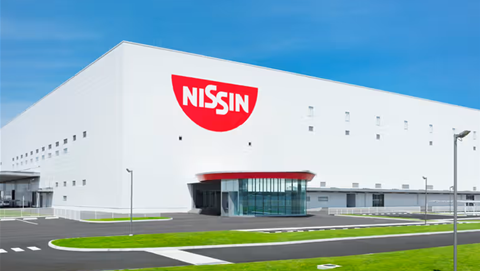AI is everywhere, from workplace automation to predictive analytics, but success stories often share one common trait: data readiness. The question is, how many organisations in Singapore and the wider APAC region are genuinely prepared?
Gartner predicts that through 2026, organisations will abandon 60 percent of AI projects unsupported by AI-ready data. It’s not the algorithm, model, or tool that determines success; it’s the state of the data feeding it.
Poorly structured, fragmented, or incomplete data can undermine the most sophisticated AI solutions, leading to inaccurate outputs, wasted investment, and missed opportunities. In some cases, the risks are even greater: compliance breaches, operational delays, or reputational damage.
In Singapore, where regulatory frameworks around data governance are stringent, successful AI deployment often means not just collecting data, but cleaning, organising, securing, and making it accessible in a way that AI systems can truly leverage.
To explore what true AI readiness looks like, the challenges businesses face, and how to lay the groundwork for sustainable innovation, iTNewsAsia spoke with Norihiro (Nick) Katagiri, Senior Vice President at Canon in Singapore, who has been working with organisations on smart technologies and their digital initiatives to improve their productivity and collaboration.
iTNews Asia: You work with many customers on their AI projects and implementations in Singapore and APAC. How are organisations in this region looking at AI?
In Asia, AI adoption is accelerating rapidly, second only to North America based on BCG’s research, underscoring its emergence as a critical business imperative. In Singapore, this trend is particularly evident, with many organisations eager to embrace AI – sometimes even before fully defining their objectives.
While AI is implemented to drive tangible business value, streamline workflows, enhance efficiency and overall competitiveness, achieving widespread employee adoption remains a key challenge. We must remember that even the most sophisticated AI tools can fall short if the workforce does not understand, trust and effectively utilise them.
We see organisations using AI to drive innovation through:
- Automating workflows: Businesses are increasingly integrating AI into their workflows to ensure efficiency and raise productivity.
- Leveraging agile and project-based work structures: Businesses are embracing agile models to enhance speed, adaptability and resilience in volatile environments. This includes optimising workflows to leverage AI automation and collaborative platforms.
- Prioritising digital skills and continuous learning: AI and smart collaborative tools help ensure digital fluency.
iTNews Asia: What should organisations assess to be ready to use AI in their operations, products and services?
The first, and most critical step, is achieving data readiness. Many organisations have valuable information scattered in analogue formats. The first step is to digitise paper-based and analogue records, converting this inert information into usable digital assets. Only then can organisations begin the crucial process of classifying their data according to different types: structured (forms, claims), semi-structured (invoices, purchase orders, reports) and unstructured (contracts, letters, articles, memos). This foundational work ensures that organisations can apply the right AI tools to the right information.
Once the data foundation is solid, organisations can embark on ensuring technology readiness. Rather than a sweeping, disruptive overhaul, the most effective approach is to identify specific workflows where AI can deliver tangible value.
With these targets in mind, organisations can then build or acquire the right technological infrastructure.
It is important to note that no AI journey can succeed without focusing on people's readiness. Equipping teams with the right skills, training and change management frameworks is critical to ensure AI adoption is smooth and effective, turning technological potential into real-world business value.
An integrated approach - addressing data, technology, and people in a logical sequence - provides a clear and compelling narrative for any organisation ready to take the next step with AI.
iTNews Asia: From your experience dealing with clients across industries, are they making the right assessments, and what are some real-world challenges they face?
Across APAC, organisations are showing strong demand for AI adoption, with investments in AI growing at a compound annual growth rate of 24 percent from 2023 to 2028. Yet, many struggle to align their ambition with operational readiness.
Key hurdles include defining clear business objectives with measurable KPIs, analysing and categorising data into their correct formats and ensuring data accuracy and consistency to prevent costly mistakes. For some organisations, the bulk of their data remains in an analogue format, which prevents them from harnessing the right technology to make full use of their existing data for business decisions.
Organisations also need robust data governance and security frameworks to maintain compliance, protect sensitive information and build trust in AI-driven processes.
iTNews Asia: How critical is data – in particular, data quality and integrity - in unlocking the power of AI?
Having high-quality and accurate data is fundamental to unlocking the true strength and power of AI. Inaccurate data, often stemming from human errors such as erroneous data entry or misinterpreted handwriting, can significantly impede success and lead to flawed decision-making.
Another crucial factor is data consolidation. By bringing together information from multiple sources into a centralised platform, organisations can eliminate silos and enable AI to generate actionable insights from a single, trusted source. This not only boosts operational efficiency but also prevents workflow bottlenecks.
For multinational organisations, the challenge is even greater. Data often spans different jurisdictions and languages, resulting in the data set not being clean or ready for AI. Ensuring data integrity and quality across these diverse, disparate systems is therefore essential for AI to deliver reliable and meaningful outcomes.
iTNews Asia: Organisations typically receive and manage large volumes and a variety of data from different sources. How can they make sense of their structured and unstructured data? How can they identify and derive value from both sources?
Data is a key driver of insights, innovation and competitive advantage, but its full potential can only be realised when organisations can transform it into actionable business value. A critical first step is understanding the types of data they handle.
Structured documents have standardised templates and fixed fields, making them relatively straightforward for data capture solutions to interpret. Semi-structured and unstructured documents vary in format and require more advanced processing to extract meaningful information.
AI-powered tools now enable organisations to automate the processing of all document types. These solutions can adapt to new layouts and use Natural Language Processing (NLP) to understand context, extract meaning and accurately interpret complex information.
Automating workflows reduces manual effort, improves accuracy and supports more informed decision-making. Canon’s solutions illustrate this approach in practice: they can automate the capture of structured, semi-structured and unstructured documents. For instance, an Accounts Payable Capture Solution can process over 1,000 invoices per day, significantly reducing manual effort and minimising errors.
The automation and optimisation of such business processes not only shorten turnaround time but also improve compliance and audit readiness for an organisation. This, in turn, frees up employees to shift their focus toward higher-value and strategic tasks that contribute directly to stronger business outcomes.
iTNews Asia: Smart technologies in the workplace can help increase productivity, improve collaboration and boost efficiency. However, they can also be difficult to implement and execute. They may not deliver the intended objectives or outcome if they are not integrated well or even lead to disengagement and resistance amongst users. What advice can you give to ensure Smart technologies can work well?
Smart technologies can significantly boost productivity, collaboration and efficiency in the workplace, but their impact hinges on proper alignment with business objectives and workforce readiness.
According to a recent survey we commissioned, employee adoption remains the greatest barrier, with 51 percent of organisations facing challenges in getting staff to embrace new technologies, and 21 percent cite difficulties with complex integration into existing workflows.
This highlights a crucial point: without engagement and trust from employees, even the most advanced tools will fail to deliver their intended outcomes.
To ensure successful implementation, organisations should prioritise human-centric design, building intuitive and user-friendly interfaces that simplify daily tasks. Simultaneously, invest in robust change management, which includes clear communication, targeted training and ongoing support. This helps employees understand the tangible benefits of new tools, builds trust and ensures they are effectively used.
Leaders should also focus on demonstrating the practical, tangible benefits of these technologies in everyday operations, rather than only promoting futuristic applications. This approach helps the workforce see measurable gains, which drives greater buy-in.
iTNews Asia: Would you be able to share a use case or example of a successful smart technology adoption from your customers?
In the use of smart technologies, lawyers and legal teams often handle high volumes of documents under tight deadlines, where even minor errors can carry significant consequences. Manual processes for document comparison and summarisation are time-consuming and prone to mistakes, slowing decision-making and case preparation.
For legal professionals, AI-powered tools that automate document handling can provide significant efficiency. For instance, a document comparison tool can automate the cross-checking of legal documents, identifying discrepancies between versions to reduce revision time and mitigate the risk of human error.
Similarly, a document summarisation tool can distill lengthy documents into actionable overviews, allowing professionals to quickly obtain critical information required to make strategic decisions relating to the casework at hand. Both solutions are designed to integrate into existing workflows to support high-volume document handling, automating routine tasks while helping to maintain accuracy and compliance.
iTNews Asia: There is a lot of pressure for organisations to jump on the AI bandwagon, and we’re seeing a rush to adopt AI. What are some common blind spots or risks that organisations often neglect? How important is it for them to get their data strategy right?
While AI adoption is accelerating rapidly, organisations face risks and run into blind spots if they move too quickly without proper planning.
Treating all data as the same will overlook the unique handling each requires, often resulting in errors and inefficiencies.
Equally critical is having clear objectives. Without defined goals, organisations struggle to measure ROI or realise tangible efficiency gains. Coupled with this, poor data quality, whether from manual entry errors, misinterpretation or inconsistent formats, undermines AI outputs.
Another often-overlooked area is data governance. Without robust frameworks covering compliance, access control and audit trails, organisations risk security breaches and reduced trust.

Ultimately, a holistic assessment of these risks - starting with a disciplined approach to data - is essential. It is the only way to ensure AI initiatives generate actionable insights and drive sustainable business value, rather than becoming a costly experiment.
- Norihiro (Nick) Katagiri, Senior Vice President, Canon, Singapore
iTNews Asia: What are some practical steps that they can take to ensure their AI (and data) transformation journey starts on the right foot?
To ensure their AI and data transformation journey starts on the right foot, organisations should take a structured, step-by-step approach. The first step is digitisation – converting physical records into digital formats. This lays the groundwork by making information accessible, accurate and ready to be processed by AI and other digital tools.
Once this foundation is in place, the next stage is digitalisation – embedding advanced tools such as AI and automation into everyday workflows. This allows businesses to move beyond simple data storage toward leveraging data for efficiency, faster decision-making and long-term innovation.
Approaching transformation in these stages allows organisations to build their AI initiatives on a strong, data-first foundation, ensuring that every step, from data capture to advanced analytics, is structured and purposeful. This method not only enhances the accuracy and reliability of insights generated by AI but also supports operational efficiency, informed decision-making, and the sustainable creation of business value. It positions organisations to fully leverage their data assets while reducing risks associated with poorly implemented AI initiatives, ensuring that innovation is both impactful and strategically aligned.
iTNews Asia: How is Canon preparing its data and tech infrastructure to meet the evolving needs of users and customers across industries in their AI adoption?
We are proactively preparing our data and technology infrastructure to support the evolving AI needs of customers across industries by focusing on helping them optimise their operational efficiency. We actively engage with customers, gathering insights from their day-to-day operations and understanding their unique pain points and strategic priorities, allowing us to tailor solutions that directly address real-world challenges and deliver measurable value. This customer-centric approach ensures that AI and technology deployments are relevant, practical and aligned with the evolving demands of each industry.
To meet these needs, Canon deploys AI-driven security solutions across workplaces, campuses, and retail environments, strengthening protection while enhancing operational efficiency. AI enables real-time analytics directly at the source, reducing latency, improving compliance, and safeguarding sensitive data. AI-powered video analytics accelerate investigations, provide instant alerts and extract actionable business intelligence to inform decision-making.
Further, AI-enabled surveillance cameras with on-device analytics offer proactive security and operational insights even during network disruptions. Canon also provides open platform video management solutions (VMS) that support scalability, seamless third-party integration, and remote monitoring, ensuring organisations can manage operations efficiently while leveraging AI at scale.
This layered, customer-centric approach ensures that Canon’s infrastructure is future-ready, adaptable and capable of supporting AI-driven innovation across diverse industries.
iTNews Asia: Finally, what advice can you give to organisations to sustain and future-proof their AI initiatives?
To sustain and future-proof AI initiatives, organisations should begin with a clear data and AI strategy, ensuring that business objectives are aligned with measurable KPIs to track success. Investing in secure, scalable and interoperable infrastructure is essential to manage growing volumes of data and workloads effectively.
Building modular, scalable and open systems ensures flexibility to integrate future AI innovations seamlessly. Finally, continuously assessing, governing and securing data is critical to maintain the accuracy and trustworthiness of outputs, creating a solid foundation for long-term, sustainable value from AI adoption.










